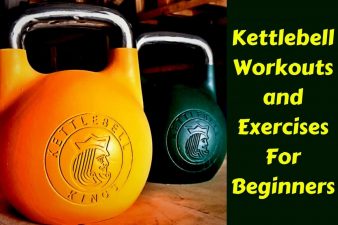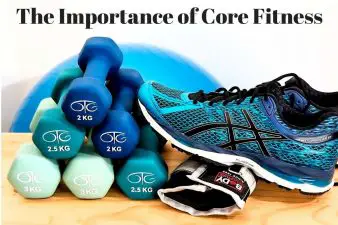Physical fitness is a state of health & wellbeing and more specifically, the ability of the body to function effectively and efficiently. Any program that neglects one or more of these components of physical fitness is NOT going to benefit your body in the long run. An effective fitness program will attempt to improve all five components of physical fitness!
Why It’s Important To Work On The Components of Physical Fitness
All the physical fitness components have benefits.
• A component such as muscle endurance makes it easy to perform daily tasks and it decreases the risk of getting an injury. Performing repetitious physical activities such as jogging, gardening, cycling etc. will become less fatiguing and you will be able to sustain fewer injuries from physical exertion and overusing of the muscles.
• Physical fitness helps to reduce the risk of serious health conditions such diabetes, arthritis, cardiovascular disease, obesity etc.
• Flexibility allows you to stretch and lengthen your muscles which help to prevent back pain, injuries and improve body balance. A well-stretched muscle helps the body to easily achieve its full range of motion.
• Excess body fat i.e. altered body composition will increase the chances of you getting exposed to risky health conditions such as diabetes, heart diseases etc. Body composition uplifts moods, improves an individual’s self-confidence, Increases the body’s energy and improves blood circulation leading to reduced risks for heart diseases.
• Helps to strengthen bones, ligaments, and tendons and decreases the risk of osteoporosis & bone fractures.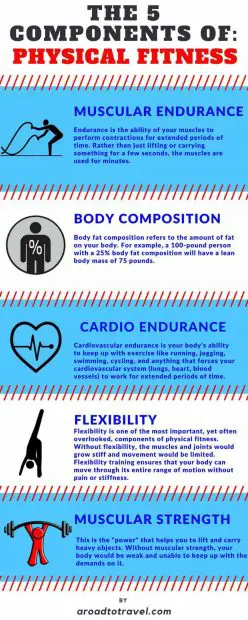
Types of Exercises for Components of Physical Fitness
There are many exercises that you can do for the different components of physical fitness and some of the exercises can help you to hit more than one component at a time. The exercises are:
1. Interval Training
It involves alternating between two exercises which require different rates of speed and effort i.e. low to high-intensity workouts which are interspersed with rest periods. Interval training is a great form of exercise as it helps you hit multiple components of physical fitness at a go. It improves cardio-respiratory endurance, body composition as well as muscular strength and endurance.
Sports such as soccer, tennis & racquetball are great forms of interval training.
2. Stretching Exercise
It is a form of physical exercise whereby a specific muscle, muscle group or tendon is deliberately stretched or flexed to improve the muscle’s elasticity & enhance the muscle tone. The result of stretching exercise is increased muscle control, range of motion and flexibility.
Yoga can help to improve flexibility & depending on the type, it can also improve muscular strength & endurance, body composition, and cardio-respiratory endurance.
3. Weight Training
It is a common type of strength training which focuses on developing the size and strength of skeletal muscles. Trainers utilize dumbbells, weighted bars or weight stacks to increase muscle endurance and strength.
4. Calisthenics
They are gymnastic exercises which are done with the aim of achieving overall body fitness and flexible movements. Calisthenics also increase the endurance of cardiovascular and muscles. 
The Five Components of Physical Fitness
Most people engage in physical fitness to stay fit and gain optimal health. However, being optimally fit usually involves more than just weightlifting. In order to get the fittest and healthy body, everyone should consider all the aspects of physical fitness. The five components of physical fitness are:
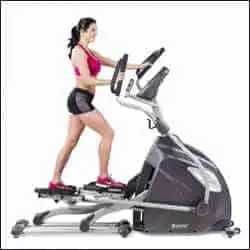
1. Cardiovascular Endurance
Cardiovascular endurance is your body’s ability to keep up with exercises such as jogging, running, swimming and any other form of exercise that makes the cardiovascular system e.g. heart, lungs and blood vessels to be able to work for an extended duration.
Cardiovascular Endurance is important as it allows you to participate in activities which you love without getting exhausted.
Cardio Choices
a. Aerobic Interval Training (involves a series of low- to high-intensity workouts interspersed with rest or relief periods)
b. Fartlek Training (periods of fast running intermixed with periods of slower running)
c. Circuit Training (endurance training/resistance training using high-intensity aerobics)
d. The Beep Test (a multi-stage fitness test in which you must do 65ft shuttle runs in time with the beeps until the beeps get too quick for you)
e. The Cooper Test (12 min. Distance Run)
f. The Tabata Method (the high-intensity type of interval workout)
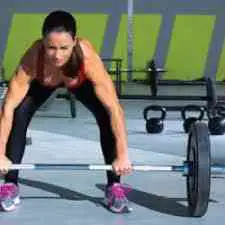
2a. Muscular Strength
Muscular Strength is the “power” that assists you to lift up & carry heavy objects. Muscular Strength is increased by carrying out heavy weight-lifting exercises. The heavier the weight, the less number of reps you are required to perform.
Recommended Exercises
a. Plank
b. Body Weight Squats
c. Walking Lunges
d. Pushups
e. Situps
2b. Endurance
Improving your muscular endurance
You’ll likely get the most noticeable results from these or other exercises if you follow a daily, exercise-until-failure approach to working out. However, don’t work out the same muscle group two days in a row. Be sure to alternate days. Rest is as important as exercise is for muscle development.
Set aside 20 to 30 minutes a day in which you can work out. Keep in mind that a long workout (60 minutes or longer) is not necessary to get better results. It’s all about the intensity at which you train.
It’s also important to note that you can improve your muscular endurance and overall fitness level by developing simple habits you can do every day to challenge yourself. These can include:
Skipping the elevator. Take the stairs. If you have two healthy and capable legs, use them!
Walking to work if possible. If this isn’t possible, challenge yourself to walk to get lunch instead of driving. Those extra steps will add up over time. This habit is especially important if your line of work requires you to sit behind a desk.
Investing in a standing desk. Standing burns more calories than sitting, improves your posture, and generally encourages a more active work environment.
It’s always a good idea to talk to your doctor before starting any exercise program, especially if you haven’t exercised in a while. They can give you guidance on other exercises that might work well for you, as well as make suggestions for ways to prevent injury while working out.

3. Muscular Endurance
For muscle endurance, train with light weights because a lighter weight will steadily train the muscle fibers which are needed for muscular endurance and allow you to perform more reps which leads to extended periods of training.
These are some of the best types of training. Many times it is most important to choose one of these that you can enjoy. It is very likely that more people like cycling or running than the other genres.
Pick one and stick with it, starting slow and building up the endurance your muscles have the ability to sustain.
‥ Running
‥ Light Barbell
‥ Cycling (stationary bike)
‥ Cycling (on a Bicycle)
‥ Static Holds
‥ Rowing
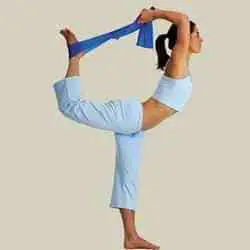
4. Flexibility
The fourth component is being flexible, this is the one component that is most usually overlooked. This is extremely important to be able to exercise and benefit the most with no pain and improved range of motion. This is the key to keep the connectivity tissue in your body supple. This allows you to twist, bend, move effectively and have a full range of motion for your entire body. Without this use of your body, you will encounter stiffness and your range will be very limited and sometimes painful.
Here are some good options to help you remain flexible:
Yoga
Yoga is one of the best ways to remain flexible. Yoga is good for all people in all stages of the physical level. Beginners and people who are in good shape both find a benefit with yoga. This is a good way to begin slowly, move at your own pace and have a benefit for breathing as well.
Dancing
Dancing offers improved flexibility, aerobic benefits and improved flexibility for your joints and muscles. Zumba has taken the world by storm and is a great alternative to a faster-paced workout than yoga can deliver.
Pilates
Another good alternative is pilates. Pilates focuses on the core but the exercises are a great help to spine, neck and the overall core muscles. Posture is a key to pilates, which stops overexertion of the muscles.
Taichi
Tai chi offers a flow of movements that is slow is almost like poetry in motion. The flow is great for all ages and all physical levels. This is one of the oldest of the flexibility exercises but one of the most user-friendly ones.
| . CALCULATE YOUR BODY MASS INDEX (BMI) compliments of the National Heart, Lung and Blood Institute. . |
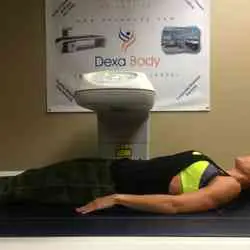
5. Body Composition
The benefits you will see on body composition is solely based on the different training methods. When overweight your focus should be on exercises that burn the most calories possible. If you are not obese but want to lose some weight then stick to exercises that build muscle and those will take care of the extra weight loss. When you are not overweight you will only choose the exercise programs that best fit into building muscle mass.
Exercises for Improving Body Composition
Weight Loss Exercises
a. Jump Rope
b. Elliptical Training
c. Skipping
d. Yoga
Muscle Building Exercises
a. swimming
b. aerobics
Body Building Exercises
a. Weight Training
b. Push Ups
c. Press Ups
d. Dead Lifts
e. Lunges
f. Squats
g. Bench Press
Being overweight not only is detrimental to health, adverse to your appearance and can have a large impact on the life you lead. Follow a set workout routine to alter your body composition. Stick to a healthy diet, avoid fatty foods as well as refined sugars.
| . Five Components of Health Related Fitness compliments of MyTeacherPages.com . |
Recommendations
• For optimal results, you should combine at least three exercises weekly. Mixing them up will allow your body to reap the maximum benefits.
• Engage in exercises which you love in order to stick to them in the long run.
• After finishing your training session, always stretch. This will help to increase your body flexibility because your muscles will still be warm & much more pliable. Stretching after an exercise also helps to keep your joints from stiffening.
• Always warm up before exercising & take a few minutes to cool down after exercising.
You should not wait until a specified set aside time for you to engage in these exercises, you can do a couple of push-ups before you get into the shower or simply pick up your pace and do some light jogging. It’s the little extra effort that makes the difference.
Physical fitness is a very important aspect for individuals who want a quality healthy life. By engaging in exercises which cover all the components of physical fitness, you are guaranteed a happy, healthier and active life.

